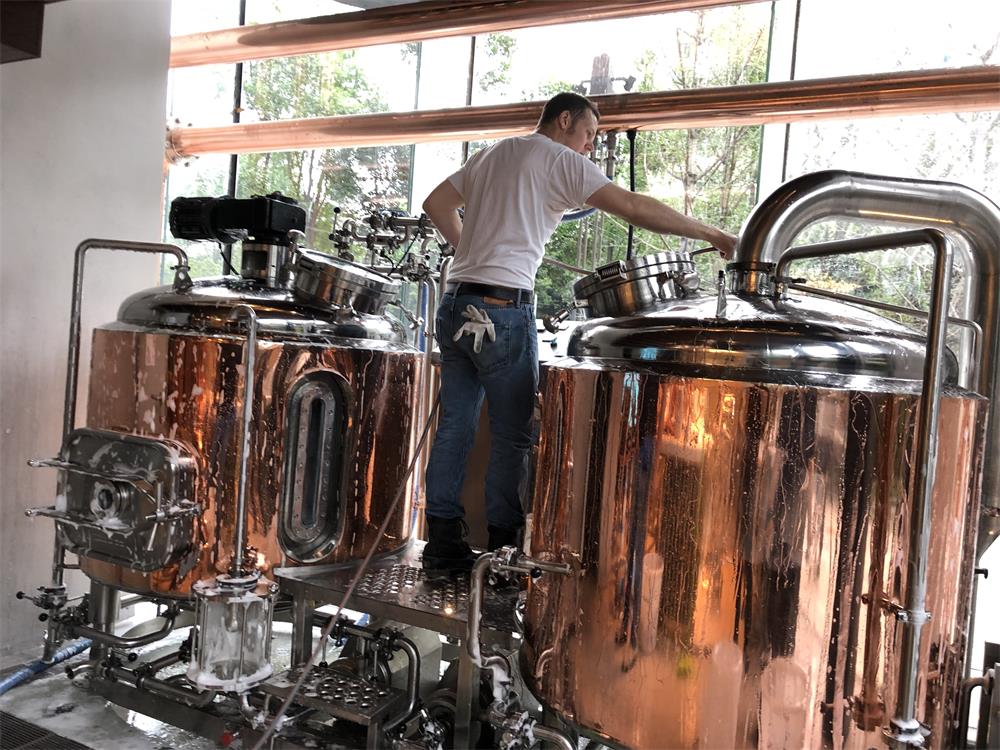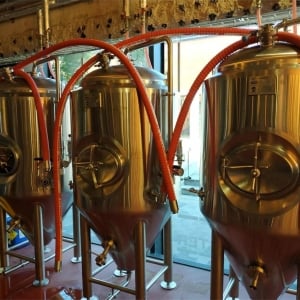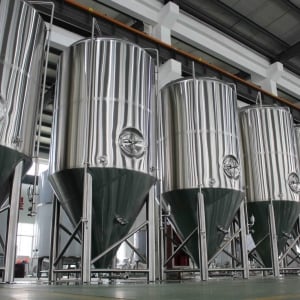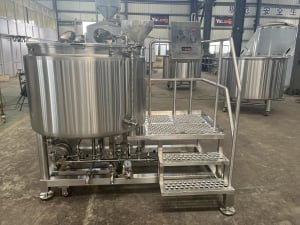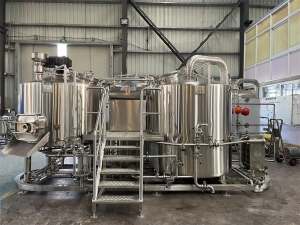Table of Contents
ToggleIntroduction
Crafting a delightful pint of beer is an art that has captivated human taste buds for centuries. The craft beer industry has been thriving, with microbreweries and craft brewers popping up across the globe. To meet the growing demand for unique and flavorful brews, commercial beer making equipment plays a vital role. In this article, we will delve into the world of commercial brewing equipment and explore its various aspects.
Understanding Commercial Beer Making Equipment
Before diving into the specifics, let’s grasp the essence of commercial beer making equipment. These are specialized tools and machinery designed to facilitate large-scale brewing processes. Unlike homebrewing setups, commercial equipment allows brewers to produce substantial quantities of beer while maintaining quality and consistency.
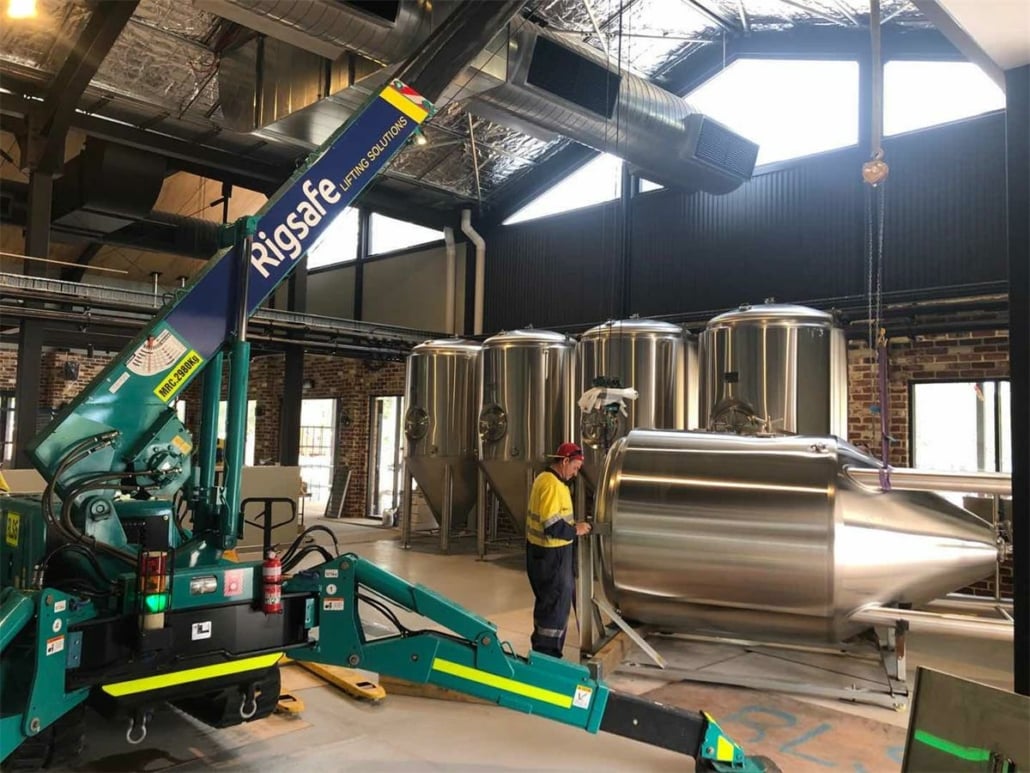
The Brewing Process: From Grain to Glass
To truly appreciate the significance of commercial beer making equipment, we need to understand the intricate brewing process. Let’s take a journey through the various stages of brewing:
Milling
The process begins with milling, where malted grains are crushed to break open their starches. The consistency of the grind impacts the efficiency of mashing.
Mashing
In the mash tun, milled grains are mixed with water at specific temperatures to convert starches into fermentable sugars. This step forms the sweet wort, the basis of all beer flavors.
Boiling and Hopping
The wort is transferred to the brew kettle, where it is boiled, and hops are added to impart bitterness and aroma. This is a critical step in defining a beer’s character.
Fermentation
After boiling, the wort is rapidly cooled and transferred to fermenters. Yeast is introduced, which converts sugars into alcohol and carbon dioxide, leading to the formation of beer.
Conditioning and Filtration
Once fermentation is complete, the beer undergoes a conditioning phase to develop flavors further. Filtration removes any impurities, leaving a clear and stable product.
Types of Commercial Beer Making Equipment
Commercial brewers utilize a range of equipment to execute the brewing process efficiently. Let’s explore some essential pieces:
Brew Kettles
Brew kettles are where the magic happens – boiling the wort and adding hops. They come in various sizes and can be equipped with additional features like steam jackets for precise temperature control.
Fermenters
Fermenters are vessels where the yeast works its magic. These can be open or closed, and some have cooling systems to regulate fermentation temperatures.
Wort Chillers
After boiling, wort chillers rapidly cool down the hot liquid to yeast-friendly temperatures, allowing for quicker fermentation.
Bright Tanks
Bright tanks are used for secondary fermentation and conditioning. They allow brewers to fine-tune flavors before packaging the beer.
Kegs and Bottling Lines
Kegs and bottling lines are essential for packaging and distributing the final product. They ensure the beer reaches consumers in its freshest form.
Factors to Consider When Choosing Equipment
Selecting the right equipment is crucial for any commercial brewery. Several factors must be taken into account:
Brewery Size and Capacity
The equipment must match the brewery’s intended production volume, ensuring it can handle demand.
Brewing Frequency
Consider how often you plan to brew and the turnaround time between batches.
Budget and Cost Considerations
Brewery owners must strike a balance between the desired equipment quality and the available budget.
Quality and Material
Investing in durable and high-quality equipment ensures longevity and consistency.
Setting Up a Commercial Brewery
Now that we understand the key components of commercial beer making equipment, let’s explore the process of setting up a commercial brewery:
Location and Space
Choosing the right location is critical. Access to markets, water supply, and zoning regulations all play a role. Additionally, ensure that you have ample space to accommodate the equipment and future expansion.
Licensing and Regulations
Obtaining the necessary licenses and adhering to regulations is a crucial step. Compliance with local, state, and federal laws ensures a smooth operation.
Utilities and Infrastructure
Having reliable utilities such as water, electricity, and gas connections is essential for seamless brewing.
Safety and Compliance
Brewery safety should be a top priority. Implement safety protocols and train staff accordingly.
Maintaining and Cleaning Equipment
Regular maintenance and cleaning of commercial brewing equipment are essential for longevity and product quality:
Regular Maintenance
Establish a maintenance schedule for all equipment, including inspection, lubrication, and repairs.
Cleaning and Sanitization
Thoroughly clean and sanitize all equipment to prevent contamination and ensure the highest standards of hygiene.
Troubleshooting Common Issues
Equip your team with the knowledge to troubleshoot common equipment problems efficiently.
Future Trends in Commercial Brewing Equipment
The world of commercial brewing equipment is continually evolving. Let’s explore some emerging trends:
Automation and Technology Integration
Automation streamlines brewing processes, leading to increased efficiency and consistency. Technology integration allows brewers to monitor and control equipment remotely.
Sustainability and Eco-friendly Solutions
Environmental concerns are driving the industry towards eco-friendly practices and equipment. Solar power, water recycling, and waste reduction are gaining popularity.
Customization and Flexibility
Brewers are demanding equipment that can adapt to various brewing styles and experimentation.
Conclusion
Commercial beer making equipment is the backbone of the brewing industry. Its ability to handle large-scale production while maintaining quality has enabled the craft beer revolution. Aspiring brewers must carefully consider their equipment choices and setup to embark on a successful brewing journey.
FAQs
1. How much does commercial beer making equipment cost?
The cost of commercial beer making equipment varies depending on the brewery’s size, capacity, and desired features. It can range from tens of thousands to several million dollars.
2. Can I use homebrewing equipment for commercial purposes?
While some homebrewing equipment may be used on a small scale, commercial brewing requires specialized equipment designed for large-scale production.
3. What are some popular brands of commercial beer making equipment?
Popular commercial equipment brands include Premier Stainless, Specific Mechanical Systems, and JV Northwest.
4. How much space is required for a commercial brewery?
The space required for a commercial brewery depends on the equipment’s size and the brewery’s production capacity. It can range from a few thousand square feet to several acres.
5. Can I customize the equipment to suit my unique brewing process?
Yes, many manufacturers offer custom equipment solutions to match specific brewing needs and styles.

